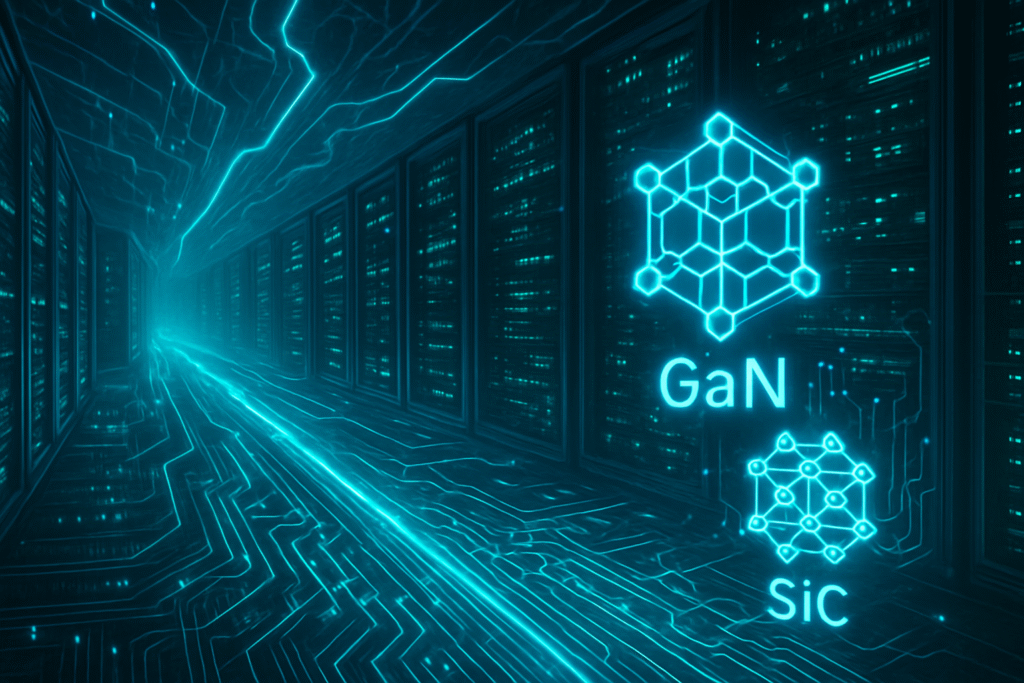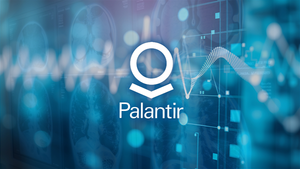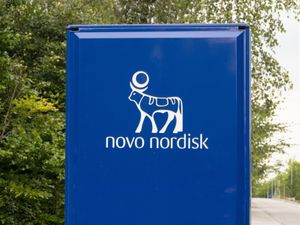
Navitas Semiconductor (NASDAQ: NVTS) has experienced an extraordinary market surge in late 2024 and throughout 2025, driven by its pivotal role in powering the next generation of artificial intelligence. The company's innovative Gallium Nitride (GaN) and Silicon Carbide (SiC) power semiconductors are now at the heart of Nvidia's (NASDAQ: NVDA) ambitious "AI factory" computing platforms, promising to redefine efficiency and performance in the rapidly expanding AI data center landscape. This strategic partnership and technological breakthrough signify a critical inflection point, enabling the unprecedented power demands of advanced AI workloads.
The market has reacted with enthusiasm, with Navitas shares skyrocketing over 180% year-to-date by mid-October 2025, largely fueled by the May 2025 announcement of its deep collaboration with Nvidia. This alliance is not merely a commercial agreement but a technical imperative, addressing the fundamental challenge of delivering immense, clean power to AI accelerators. As AI models grow in complexity and computational hunger, traditional power delivery systems are proving inadequate. Navitas's wide bandgap (WBG) solutions offer a path forward, making the deployment of multi-megawatt AI racks not just feasible, but also significantly more efficient and sustainable.
The Technical Backbone of AI: GaN and SiC Unleashed
At the core of Navitas's ascendancy is its leadership in GaNFast and GeneSiC
and GeneSiC technologies, which represent a paradigm shift from conventional silicon-based power semiconductors. The collaboration with Nvidia centers on developing and supporting an innovative 800 VDC power architecture for AI data centers, a crucial departure from the inefficient 54V systems that can no longer meet the multi-megawatt rack densities demanded by modern AI. This higher voltage system drastically reduces power losses and copper usage, streamlining power conversion from the utility grid to the IT racks.
technologies, which represent a paradigm shift from conventional silicon-based power semiconductors. The collaboration with Nvidia centers on developing and supporting an innovative 800 VDC power architecture for AI data centers, a crucial departure from the inefficient 54V systems that can no longer meet the multi-megawatt rack densities demanded by modern AI. This higher voltage system drastically reduces power losses and copper usage, streamlining power conversion from the utility grid to the IT racks.
Navitas's technical contributions are multifaceted. The company has unveiled new 100V GaN FETs specifically optimized for the lower-voltage DC-DC stages on GPU power boards. These compact, high-speed transistors are vital for managing the ultra-high power density and thermal challenges posed by individual AI chips, which can consume over 1000W. Furthermore, Navitas's 650V GaN portfolio, including advanced GaNSafe power ICs, integrates robust control, drive, sensing, and protection features, ensuring reliability with ultra-fast short-circuit protection and enhanced ESD resilience. Complementing these are Navitas's SiC MOSFETs, ranging from 650V to 6,500V, which support various power conversion stages across the broader data center infrastructure. These WBG semiconductors outperform silicon by enabling faster switching speeds, higher power density, and significantly reduced energy losses—up to 30% reduction in energy loss and a tripling of power density, leading to 98% efficiency in AI data center power supplies. This translates into the potential for 100 times more server rack power capacity by 2030 for hyperscalers.
power ICs, integrates robust control, drive, sensing, and protection features, ensuring reliability with ultra-fast short-circuit protection and enhanced ESD resilience. Complementing these are Navitas's SiC MOSFETs, ranging from 650V to 6,500V, which support various power conversion stages across the broader data center infrastructure. These WBG semiconductors outperform silicon by enabling faster switching speeds, higher power density, and significantly reduced energy losses—up to 30% reduction in energy loss and a tripling of power density, leading to 98% efficiency in AI data center power supplies. This translates into the potential for 100 times more server rack power capacity by 2030 for hyperscalers.
This approach differs profoundly from previous generations, where silicon's inherent limitations in switching speed and thermal management constrained power delivery. The monolithic integration design of Navitas's GaN chips further reduces component count, board space, and system design complexity, resulting in smaller, lighter, and more energy-efficient power supplies. The initial reaction from the AI research community and industry experts has been overwhelmingly positive, recognizing this partnership as a critical enabler for the continued exponential growth of AI computing, solving a fundamental power bottleneck that threatened to slow progress.
Reshaping the AI Industry Landscape
Navitas's partnership with Nvidia carries profound implications for AI companies, tech giants, and startups alike. Nvidia, as a leading provider of AI GPUs, stands to benefit immensely from more efficient and denser power solutions, allowing it to push the boundaries of AI chip performance and data center scale. Hyperscalers and data center operators, the backbone of AI infrastructure, will also be major beneficiaries, as Navitas's technology promises lower operational costs, reduced cooling requirements, and a significantly lower total cost of ownership (TCO) for their vast AI deployments.
The competitive landscape is poised for disruption. Navitas is strategically positioning itself as a foundational enabler of the AI revolution, moving beyond its initial mobile and consumer markets into high-growth segments like data centers, electric vehicles (EVs), solar, and energy storage. This "pure-play" wide bandgap strategy gives it a distinct advantage over diversified semiconductor companies that may be slower to innovate in this specialized area. By solving critical power problems, Navitas helps accelerate AI model training times by allowing more GPUs to be integrated into a smaller footprint, thereby enabling the development of even larger and more capable AI models.
While Navitas's surge signifies strong market confidence, the company remains a high-beta stock, subject to volatility. Despite its rapid growth and numerous design wins (over 430 in 2024 with potential associated revenue of $450 million), Navitas was still unprofitable in Q2 2025. This highlights the inherent challenges of scaling innovative technology, including the need for potential future capital raises to sustain its aggressive expansion and commercialization timeline. Nevertheless, the strategic advantage gained through its Nvidia partnership and its unique technological offerings firmly establish Navitas as a key player in the AI hardware ecosystem.
Broader Significance and the AI Energy Equation
The collaboration between Navitas and Nvidia extends beyond mere technical specifications; it addresses a critical challenge in the broader AI landscape: energy consumption. The immense computational power required by AI models translates directly into staggering energy demands, making efficiency paramount for both economic viability and environmental sustainability. Navitas's GaN and SiC solutions, by cutting energy losses by 30% and tripling power density, significantly mitigate the carbon footprint of AI data centers, contributing to a greener technological future.
This development fits perfectly into the overarching trend of "more compute per watt." As AI capabilities expand, the industry is increasingly focused on maximizing performance while minimizing energy draw. Navitas's technology is a key piece of this puzzle, enabling the next wave of AI innovation without escalating energy costs and environmental impact to unsustainable levels. Comparisons to previous AI milestones, such as the initial breakthroughs in GPU acceleration or the development of specialized AI chips, highlight that advancements in power delivery are just as crucial as improvements in processing power. Without efficient power, even the most powerful chips remain bottlenecked.
Potential concerns, beyond the company's financial profitability and stock volatility, include geopolitical risks, particularly given Navitas's production facilities in China. While perceived easing of U.S.-China trade relations in October 2025 offered some relief to chip firms, the global supply chain remains a sensitive area. However, the fundamental drive for more efficient and powerful AI infrastructure, regardless of geopolitical currents, ensures a strong demand for Navitas's core technology. The company's strategic focus on a pure-play wide bandgap strategy allows it to scale and innovate with speed and specialization, making it a critical player in the ongoing AI revolution.
The Road Ahead: Powering the AI Future
Looking ahead, the partnership between Navitas and Nvidia is expected to deepen, with continuous innovation in power architectures and wide bandgap device integration. Near-term developments will likely focus on the widespread deployment of the 800 VDC architecture in new AI data centers and the further optimization of GaN and SiC devices for even higher power densities and efficiencies. The expansion of Navitas's manufacturing capabilities, particularly its partnership with Powerchip Semiconductor Manufacturing Corp (PSMC) for 200mm GaN-on-Si transistors, signals a commitment to scalable, high-volume production to meet anticipated demand.
Potential applications and use cases on the horizon extend beyond AI data centers to other power-intensive sectors. Navitas's technology is equally transformative for electric vehicles (EVs), solar inverters, and energy storage systems, all of which benefit immensely from improved power conversion efficiency and reduced size/weight. As these markets continue their rapid growth, Navitas's diversified portfolio positions it for sustained long-term success. Experts predict that wide bandgap semiconductors, particularly GaN and SiC, will become the standard for high-power, high-efficiency applications, with the market projected to reach $26 billion by 2030.
Challenges that need to be addressed include the continued need for capital to fund growth and the ongoing education of the market regarding the benefits of GaN and SiC over traditional silicon. While the Nvidia partnership provides strong validation, widespread adoption across all potential industries requires sustained effort. However, the inherent advantages of Navitas's technology in an increasingly power-hungry world suggest a bright future. Experts anticipate that the innovations in power delivery will enable entirely new classes of AI hardware, from more powerful edge AI devices to even more massive cloud-based AI supercomputers, pushing the boundaries of what AI can achieve.
A New Era of Efficient AI
Navitas Semiconductor's recent surge and its strategic partnership with Nvidia mark a pivotal moment in the history of artificial intelligence. The key takeaway is clear: the future of AI is inextricably linked to advancements in power efficiency and density. By championing Gallium Nitride and Silicon Carbide technologies, Navitas is not just supplying components; it is providing the fundamental power infrastructure that will enable the next generation of AI breakthroughs. This collaboration validates the critical role of WBG semiconductors in overcoming the power bottlenecks that could otherwise impede AI's exponential growth.
The significance of this development in AI history cannot be overstated. Just as advancements in GPU architecture revolutionized parallel processing for AI, Navitas's innovations in power delivery are now setting new standards for how that immense computational power is efficiently harnessed. This partnership underscores a broader industry trend towards holistic system design, where every component, from the core processor to the power supply, is optimized for maximum performance and sustainability.
In the coming weeks and months, industry observers should watch for further announcements regarding the deployment of Nvidia's 800 VDC AI factory architecture, additional design wins for Navitas in the data center and EV markets, and the continued financial performance of Navitas as it scales its operations. The energy efficiency gains offered by GaN and SiC are not just technical improvements; they are foundational elements for a more sustainable and capable AI-powered future.
This content is intended for informational purposes only and represents analysis of current AI developments.
TokenRing AI delivers enterprise-grade solutions for multi-agent AI workflow orchestration, AI-powered development tools, and seamless remote collaboration platforms.
For more information, visit https://www.tokenring.ai/.






